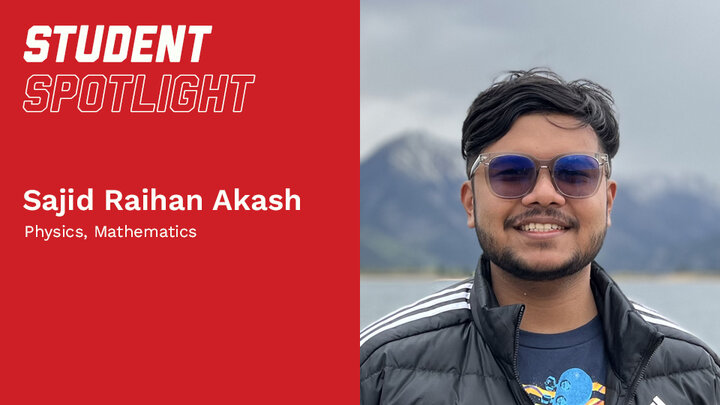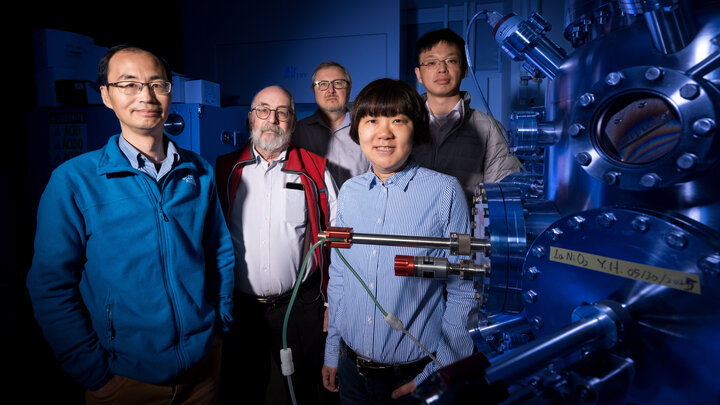Majors: Physics and Mathematics
Hometown: Dhaka, Bangladesh
Sajid decided to double major in physics and mathematics during his first year at the University of Nebraska-Lincoln. Now a senior, he recounts a pivotal childhood moment that led him to that decision.
“What truly sparked my interest was reading a book in eighth grade, The 100: A Ranking of the Most Influential Persons in History, by Michael H. Hart. I was struck by the fact that Sir Isaac Newton was ranked second, just after a religious figure,” says Sajid.
“That made me wonder: why Newton? What made him so important? What did he even do? As I began reading about his life and work, I realized how profoundly he had reshaped our understanding of the universe. That’s when I got interested in physics. As for mathematics, it is the language of physics. For me, mathematics is, in its way, the poetry of logical ideas.”
For his spring 2025 research project, Sajid worked with a group led by his faculty sponsor, Dr. Ilya Kravchenko, on detecting neutrinos: elementary particles that are uncharged and have a very small mass.
“These tiny, invisible particles are constantly streaming through us from powerful cosmic events, yet they barely interact with anything. We’re part of an international experiment called the Radio Neutrino Observatory in Greenland (RNO-G), which places antennas deep in the ice to catch the rare signals neutrinos leave behind,” says Sajid.
A lesson that Sajid shares was especially impactful during the project was learning first-hand how research is rarely linear and often requires reassessment.
His work included analyzing calibration data collected by the RNO-G in the season of 2022 with a surface pulser. The goal was to compare data to simulations and form conclusions regarding the correctness of antenna positions within simulation and the index of refraction model.
“There were times when I got stuck for days trying to figure out why my analysis wasn’t working or why a piece of data didn’t make sense. It can be frustrating, especially when progress feels slow,” says Sajid. “But I’ve learned that hitting roadblocks is part of the process—it means I am asking real questions.”
This experiential learning opportunity allowed Sajid to accelerate his application of fundamental concepts to the field.
“This project has strengthened my programming skills as I work with complex detector data to help identify rare particle signals. I’ve learned how to process and interpret radio waveforms that may be linked to ultra-high-energy neutrino events,” says Sajid. “Working in such a large international collaboration has also taught me the value of teamwork—how different experts contribute to a shared goal of advancing knowledge about the universe.”
Sajid is especially grateful for Dr. Kravchenko’s exceptional mentorship throughout his educational experience.
“He gives me the space to explore ideas independently, while also offering guidance and clarity when I need it. His deep knowledge of experimental particle physics and his approachable style have made even the most complex parts of the project feel doable,” says Sajid.
Childhood curiosity and asking, “why?” propelled Sajid into his fields of study in the College of Arts and Sciences. Now, academic curiosity is fueling his momentum as he graduates and steps into the future.
“After graduation, I plan to pursue a PhD in theoretical physics, focusing on quantum gravity. This research experience has not only deepened my interest in the fundamental laws of nature but also equipped me with skills that are essential for theoretical physics,” says Sajid. “It has reinforced my passion for fundamental physics, especially in areas that bridge particle physics and cosmology.”




